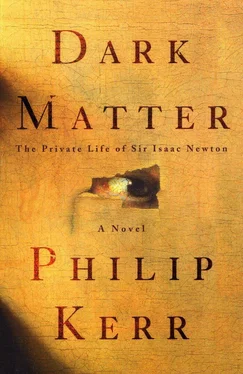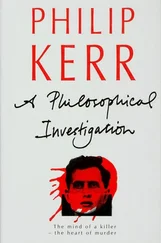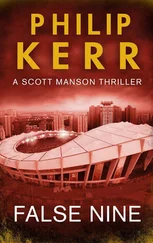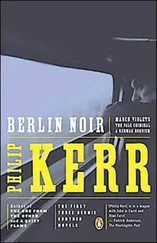Before dinner I went to The King’s Bench to make enquiries of Mister Defoe, that had taken the Master Worker’s house in the Tower. For since he was to live amongst us in the Mint, my master wished to know what kind of a fellow he was. And I discovered that Mister Neale’s friend was an occasional pamphleteer who also went by the name of Daniel de Foe, and Daniel De Fooe, and that he had once been made bankrupt in the enormous sum of seventeen thousand pounds, for which, prior to my seeing him in court, he had been imprisoned in the Fleet. Before his bankruptcy he had been a liveryman of the Butcher’s Company, a member of the Cornhill Grand Jury, and a projector in several enterprises, none of which had prospered. Currently he was acting as a trustee for the national lottery that Neale managed; but as well as this, he owned a brickmaker’s yard in Tilbury, and acted as the accountant to the commission on glass duty, collecting the tax on glasses and bottles, although not the window tax. But he still owed a lot of money, for the principal debt remained undischarged, so that I wondered how he was ever permitted to remain outside of the debtor’s prison, let alone work for Neale.
All of this I told to Newton when we met for dinner outside York Buildings off the Strand, which was where his friend, Mister Samuel Pepys, of the Royal Society, lived.
“You have done well,” said Newton. “I myself have discovered he is spying on me, for I am certain he followed me here today.”
“A spy?” Instinctively I looked around, but could see no sign of Mister Neale’s strange friend. “Are you certain, sir?”
“Quite certain,” replied Newton. “I saw him first when I got down from my carriage to leave some depositions with Mister Taylor at the Temple. He was speaking to some of the whores who go there. From there I went to the Grecian, and leaving there just now to come and meet you here, I saw him again. Which goes beyond all coincidence.”
“Why would Mister Neale wish to spy on you, Master?”
Newton shook his head impatiently. “Neale is nothing,” he said. “But there are some powerful men behind Neale who might wish to discredit me. Lord Godolphin and other Tories who hate all Whigs, like Lord Montagu, and their creatures, like you or I. Perhaps it would explain why our Mister Defoe is permitted to remain out of the debtors’ prison.”
Newton looked up at York Buildings, which were several modern houses that occupied the site of a great house that was once owned by the Archbishops of York.
“It would be well if Mister Defoe did not see us go in here,” he said. “For my friend Mister Pepys has his own fair share of Tory enemies.”
And so we went into the New Exchange nearby and meandered in a most haphazard fashion about its walks and galleries for several minutes, until Newton was convinced that we would be lost to anyone trying to follow us.
In York Buildings our host lived as comfortably as any man I ever saw. He was a most convivial man in his sixties who was a former President of the Royal Society and, until the accession of King William to the throne, had been Secretary to the Admiralty. I liked him immediately for he made me most welcome, as if he and I had been long acquainted. Mister Pepys lived very handsomely, but it was as well I had been asked to do that gentleman’s table the justice it deserved, for our host ate and drank almost as little as my master, explaining that he was troubled with the stone which obliged him to leave off eating and, more particularly, drinking, rather sooner than he often had a mind to.
“And who keeps your house in the Tower, Mister Ellis?” asked Mister Pepys. “Some pretty wench, I’ll be bound.”
“Sir, I cannot yet afford a servant. But I manage well enough. It is a fine little house I have. Thanks to the Doctor.”
“Yes, I know the one. Indeed there is very little about the Tower I do not know.”
Mister Pepys then proceeded to tell us a most curious story that involved the Tower.
“During the December of 1662 I spent several days digging for buried treasure in the Tower, for it had been rumoured that Sir John Barkstead had, while he was Oliver Cromwell’s Lieutenant of the Tower, placed the sum of seven thousand pounds in a butter firkin, and then hidden it somewhere in the Tower. But the search came to nothing.
“Then, not long after my retirement from the Admiralty, in 1689, my enemies reappeared with the aim of having me eliminated beyond recall to any government office. I was imprisoned in the Tower for six long weeks. I was not close-confined, which afforded me the opportunity to study the Tower records. These are kept in St. John’s Chapel at the White Tower. There, to my great fascination, I soon discovered that Barkstead, who was hanged in 1662, had spent a prodigious amount of time working among the Tower records; and, in particular, with those documents that dealt with the Templars.
“The Templars were an order of warrior monks who were accused of heretical practices by Philippe the Fourth of France; but it was generally held that King Philip envied the Order its enormous wealth and influence, and that the charges were falsely trumped up as an excuse to rob the Order. Many Templars were burned as heretics but a large number escaped. It was supposed that as many as eighteen galley ships containing the treasure of the Templars set sail from La Rochelle in 1307. The ships were never heard of again.
“Strenuous efforts were made to arrest those Templars who came to England,” continued Mister Pepys, “and many of these were imprisoned in the Tower. It is said that, fearing the secret of their treasure might forever be lost, the Templars made a map showing its location. This map was never found although a commentary made by a Jew who had seen the map was said to exist that purported to describe the treasure and what was on the map.
“Now before he was come to serve the Commonwealth, Barkstead was a goldsmith in the Strand, in a shop he purchased from Jews. I now believe that this was when he discovered the existence of that same commentary and that upon learning of the existence of Templar treasure, Barkstead did everything in his power to make himself Lord Lieutenant of the Tower, with the sole aim of finding the treasure for himself.
“It was a secret he shared with no one, not even his mistress, who nevertheless suspected something from his assiduous endeavours with the Tower records, and finally he told her that a great sum of money was buried in the basement of the Bell Tower. And yet none of Barkstead’s notes, which may still be found in the Tower records, make any mention of the Bell Tower. Only the White Tower, where many of the Templars were held. It was there that Barkstead concentrated his efforts.”
“Did you say the north-east turret?” remarked my master, frowning. “Until comparatively recently the Astronomer Royal, Mister Flamsteed, under the patronage of Sir Jonas Moore, Surveyor to the Ordnance, occupied that north-east turret as a makeshift observatory.”
“It is my belief,” said Mister Pepys, savouring his own conversation as I had savoured his excellent French wine, “that Flamsteed and Moore were looking for something else beside the stars.”
“But upon what basis did they conduct their search?” I asked. “Did they find the map? Or the commentary?”
“Sir Jonas Moore was a good friend of the librarian,” explained Mister Pepys. “Moore was Official Surveyor to the Ordnance in the Tower since 1669. No man knew the Tower better than he. I was well acquainted with Moore until his death, in 1679. But I never knew the secret of his wealth, which came late in his life. It was given out that the money came from the official and unofficial remunerations he received from his surveying work in Tangier. But I never believed that, for the sums of money were too great.
Читать дальше












